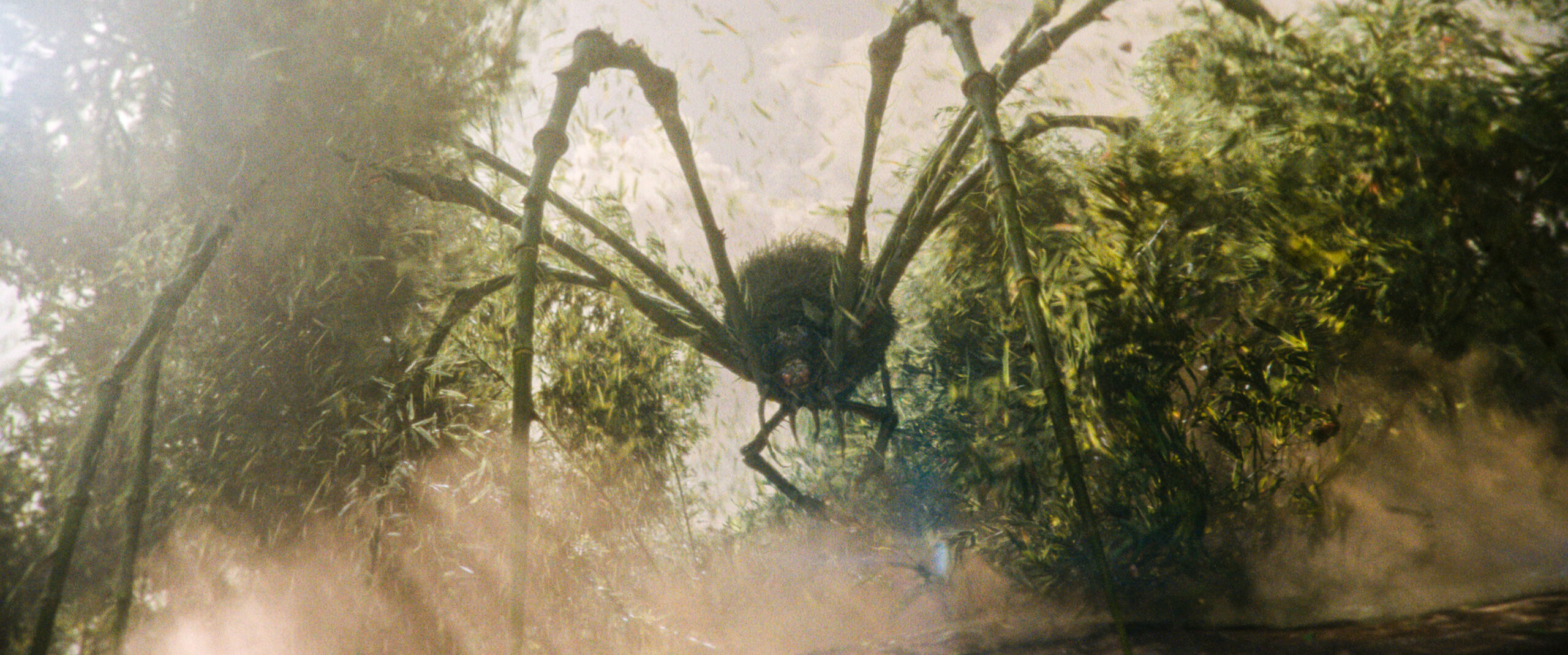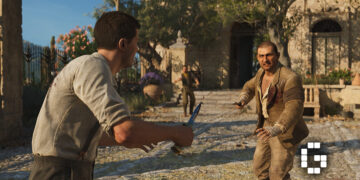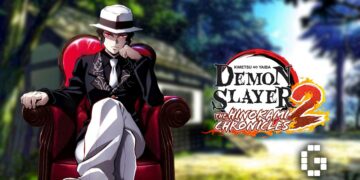With the release of Monarch : Legacy of Monsters, an Apple TV+ series in the MonsterVerse franchise, we had the opportunity to speak with VFX Supervisor Sean Konrad in an interview.

Sean Konrad is a VFX supervisor for film and television with over 20 years of experience under his belt. Before Monarch: Legacy of Monsters, he’s best known for his work in Godzilla (2014), The Witches, Deadpool 2, and much more.
Interview is edited for clarity
Biggest Challenges
Our first question we asked Sean was what had been the biggest challenge when making a series based on the Monsterverse.
To which, Sean mentioned that even if you had the greatest budget in the world, you’re going to have to figure out how to support four times more content, and a lot of that means being smart about how you like to deliver the monsters on screen and in terms of efficiency of the edits.

He continued by saying that it’s a huge challenge because instead of having four or five set pieces that you’re doing for a film, you’ve got around 30 across all these different episodes, which involved environments, creatures, all sorts of complicated creative effects, invisible effects, and the like.
“It’s not necessarily that there’s more difficult individual work, but there’s just more different kinds of work, and that means you have to give that to a lot of different people to achieve it.”
One example that Sean brought up was in Godzilla vs Kong, they had a number of visual effects vendor companies working on the movie. But with Monarch: Legacy of Monsters, there’s 15 visual effect companies that had thousands of people contributing to the visual effects department, so organising and making things work was really challenging to Sean.
Making Monsters Big
For a series like Monarch: Legacy of Monsters, the monsters have to exude their intimidating aura by looking extremely big, we asked Sean what were the challenges of displaying their size on the screen.
“A lot of it comes down to how you shoot it, right? So one of the things that sort of drives a lot of the show is that it’s a human drama. We’re telling it from the point of view of our protagonist. And that means that the cameras are low and close to them, and very early on there were a lot of stylistic decisions that our director of photography, Jess Hall made. He was in the first block.”

Sean talks about the intricacies of cinematography, going into detail about anamorphic wide angles and other filming philosophies like framing composition.
When putting the shots together, Sean mentions that you do a lot of the same things that worked in the feature works where you need to put in atmospherics and you build up an atmosphere in between them like rain, smoke, little explosions, and all those things start to give it a sense of scale and complexity.
Another challenge is to bring all of those down to the small screen and make sure that a lot of those details are still readable on a TV.
Skull Island
From the opening sequence, we saw some different styles of Skull Island. We also got to review what happened in San Francisco when Godzilla attacked from Kiko’s point of view, which brings the memory back from the previous movie. We asked Sean how they made sure all of the special effects and everything on Skull Island, and even John Goodman, look like on Skull Island.

“John was looking great, and so that was like a little bit of makeup, and you get him under the camera, and you get, a lot of it just comes from the performance. I’m sure if you go side by side, it’s going to look different, but a lot of it is just that he acts the same. So it feels like the same character is here and I’m so glad we got him.”
From a visual effects point of view, Sean said that the way they made it feel the same was that they used the same assets that were made in those films. The team went back and looked at the old animation files for Godzilla for that Golden Gate Bridge scene, and they made sure to do it with the exact same framework for it.
Favourite Sequence and Creature You’d Like to Work On
The next question we asked Sean was out of the effect sequences in the show that he could talk about, which was the one that he was most proud of, and were there any particular creatures from Godzilla’s history that he’d like to get a chance to work on in the show.
“The second question is always dangerous because then people might think, ‘Oh, that’s in the plans or whatever.’ But. I don’t know. I love a million monsters and Godzilla’s history, like Biollante. I think it’s really cool. And that would be such a fun one to mess around with.”

In terms of the sequence, Sean brought up the sequence at the end of episode 1. Sometimes with these bigger blockbuster films, people can design a big action sequence, and then go back into the human drama.
“It sort of feels secondary where in our show, like in that big sequence at the end of episode one, there’s a very big dramatic thing. You know, the thing that led us to that moment was what needed to happen with the character and what needed to happen to sort of ignite the mystery and propel the characters forward.”
Sean continued saying that getting the right amount of movement is also challenging, as there’s a lot of effects to take into account from monster goo, to their parts and all the dust being kicked up; on top making sure all of the effects aren’t colliding with each other is a real technical challenge.
Conversations with Legendary or Toho
We asked Sean if the team had any contact with Legendary or Toho when they started working on the series, and did they tell him about their wishes for it.
“We were constantly in contact with Legendary and Toho. The way this works is that the directors make their cuts, and then Legendary looks at it and says, ‘Okay, we need to do X, Y, and Z.’. And then Toho looks at the Godzilla scenes and says, ‘Okay, please change this or make sure this doesn’t happen or whatever’.” Sean replied.

Sean mentions that Legendary and Toho had also given those comments at appropriate times, and that helped the team out as they can pivot easily when those notes come in.
One of the examples that Toho had wished for the team to not do was a POV from Godzilla.
“The note from Toho was that “We’ve thought about doing this in the past, but we think that Godzilla’s point of view is unknowable.” I thought that was brilliant. Totally brilliant. I love the fact that, like you shouldn’t, Godzilla is a god. You shouldn’t be able to understand what he understands.”
Tokusatsu Elements
Given the Tokusatsu origins of these characters, we asked Sean if there were any Tokusatsu elements that he had tried to use in Monarch Legacy of Monsters.
“I mean, a million things, right? When we started the creative process of conceptualising these creatures, what we would do was sometimes in the script, you’d have a very clear idea from the writers of what they wanted and sometimes you wouldn’t. And we would be like, okay, this needs to happen in the scene.”
Sean continued by saying that the team would spend time on Zoom calls before they had started the principal photography.

One of Sean’s favourite things when making the series was going to the bottom of the ocean and looking at all the creepy crawlies that live down here. There’s these weird seaworms that spew out their guts and then bring it back inside.
“I think we all have a little bit of that immature, gross-out humor kind of thing in us and so we’re all always really looking forward to finding a way to make something that’s both maximalist and strange.” Sean continued.
However, Sean didn’t want to go into specifics in case the team did something along the line in the future. But they draw inspiration from the natural world wherever they can, and there’s so many weird and wonderful things in the natural world that inspire them constantly.
We would like to thank Sean Konrad for taking the time to answer our questions.
The first two episodes of Monarch: Legacy of Monsters are now available on Apple TV+.













![[EXCLUSIVE] Creative Masterminds from Gearbox Software Reveal What Makes Borderlands 4 Worth the Wait](https://cdn.gamerbraves.com/2025/07/Borderlands-4-at-Bilibili-World-2025_Interview_FI-360x180.jpg)




![[ASIA EXCLUSIVE] Bringing Back a Classic: Inside the Making of FINAL FANTASY TACTICS – The Ivalice Chronicles](https://cdn.gamerbraves.com/2025/06/FFT-Ivalice-Chronicles_Interview_FI2-360x180.jpg)












